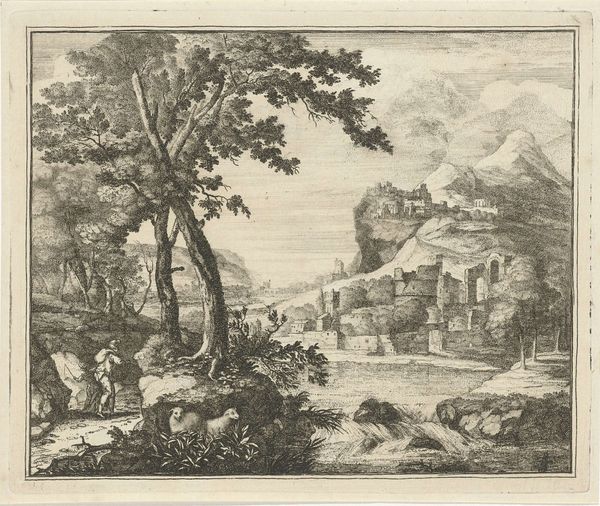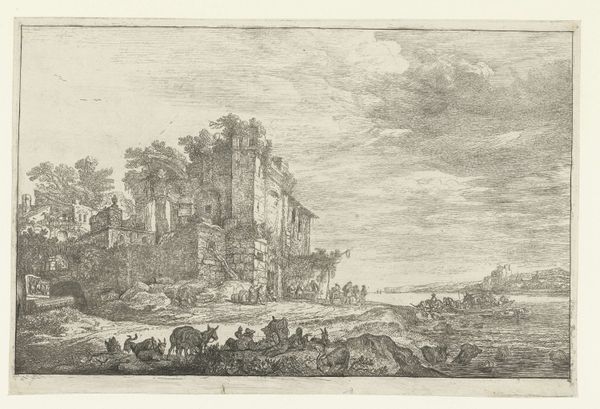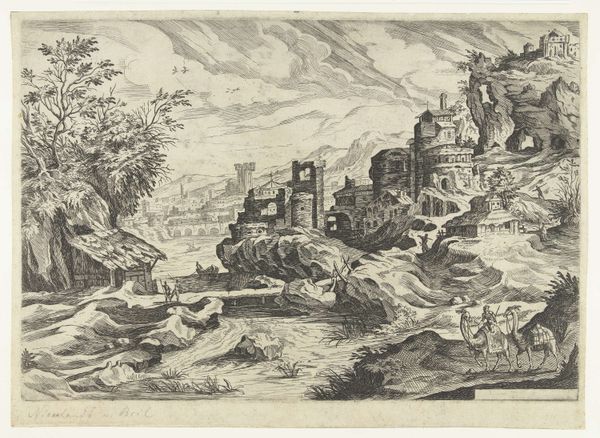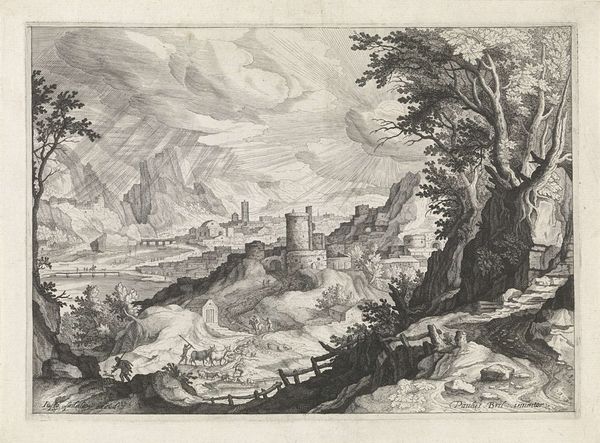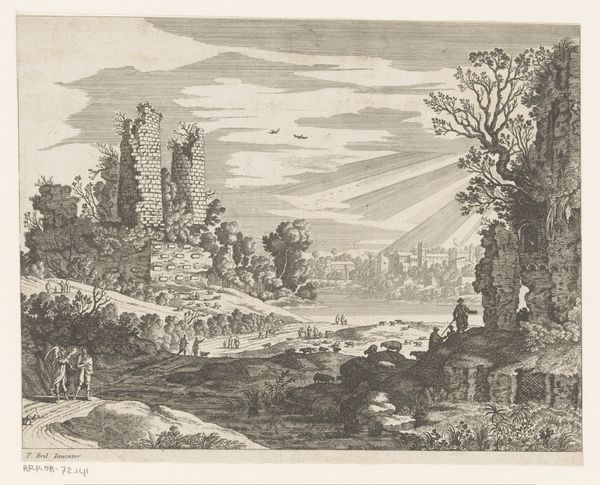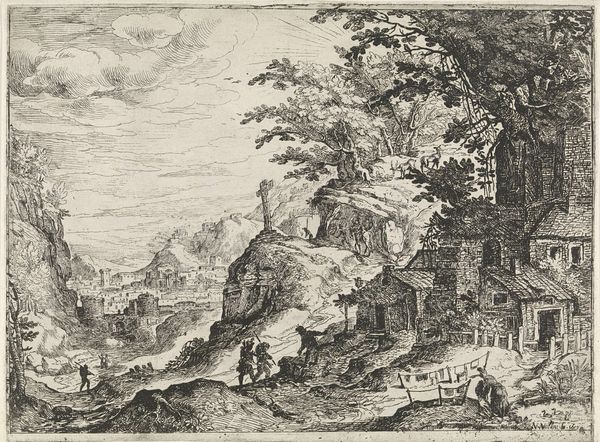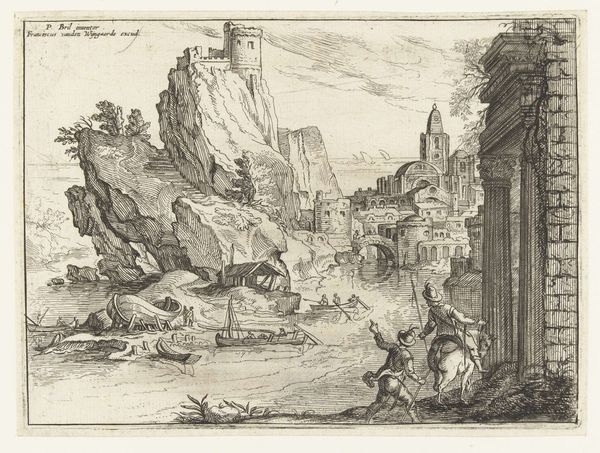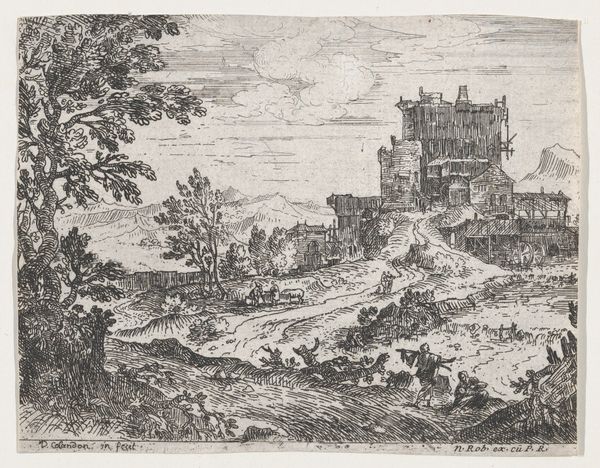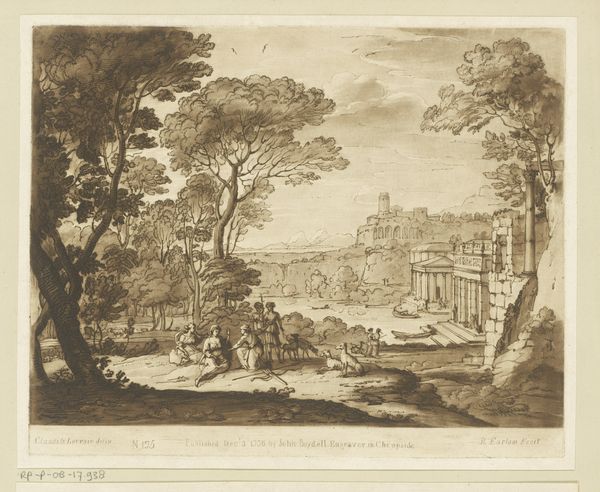
drawing, print, etching, paper, engraving
#
drawing
#
narrative-art
# print
#
etching
#
landscape
#
figuration
#
paper
#
line
#
genre-painting
#
northern-renaissance
#
engraving
Dimensions: height 249 mm, width 327 mm
Copyright: Rijks Museum: Open Domain
Editor: This is Lucas Vorsterman II's etching and engraving "Landscape with the Prodigal Son as a Swineherd," made between 1650 and 1655. It's got this sprawling, almost panoramic feel, with the distant cityscape contrasting starkly against the close-up depiction of the son amongst the pigs. It feels…judgmental, almost, putting poverty on display. What’s your read of it? Curator: It is judgmental in that the artwork performs a role within the cultural landscape of 17th century Netherlands where certain morals are lauded. Vorsterman's choice to depict the prodigal son in such stark circumstances reminds the viewer of the consequence of immoral and dishonorable behavior within this cultural context. But, is the image also subtly commenting on social mobility and wealth disparity? Consider where this was displayed and who its audience would have been. Editor: That's a great point. I was just focusing on the obvious narrative, but you're right, it would have been shown to a specific audience. It's a reminder of who this artwork spoke to. Do you think the landscape is idealized or realistic for that period? Curator: The landscape blends the two. There are certainly elements suggesting a real, observed world but the overall composition and dramatic light, especially highlighting the distant city, evoke a moral and perhaps even religious significance, directing the viewer's eye – and thus their understanding – toward a specific, taught, ideal. Consider the role art played in conveying moral messages during this time. Editor: So the artist is using the landscape to preach a lesson. Curator: Precisely. It is both aesthetic and didactic; an engraving meant not just to be admired but also to instruct its viewers about the pitfalls of certain life choices, viewed through the lens of 17th-century social and religious norms. Editor: That’s so interesting. It shifts my perspective entirely. I was only considering the figure initially. Curator: And that's often the mistake. Art rarely exists in a vacuum; it reflects the society that produced it and, consciously or not, it promotes, challenges, or reflects it back onto that society. Editor: Definitely something to think about. I will from now on also consider who this artwork spoke to. Thanks!
Comments
No comments
Be the first to comment and join the conversation on the ultimate creative platform.
